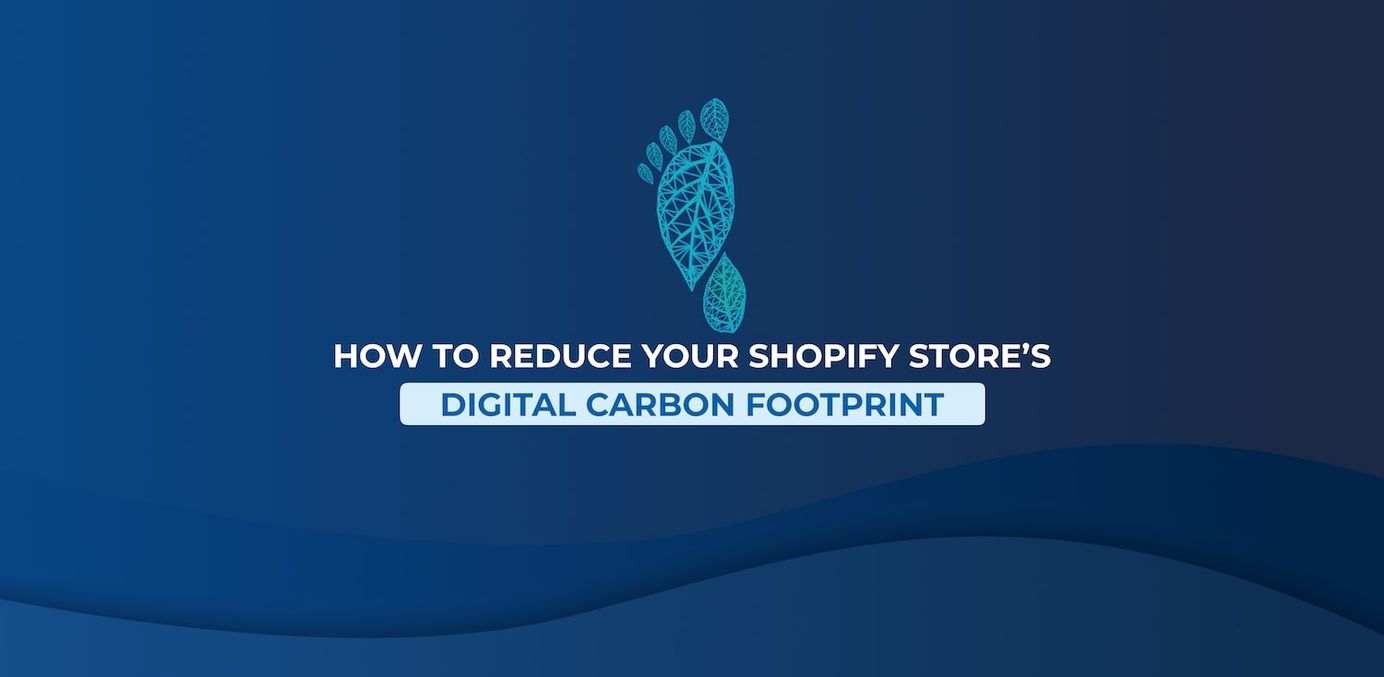
How To Reduce Your Shopify Store's Digital Carbon Footprint
Table of Contents
As ecommerce retailers, we're always looking to improve, up our game and differentiate from the competition. Increasingly – we also want to make sure we're acting in an ethical, responsible manner, that showcases our brand values.
At MindfulCommerce, we're all about helping you do both – grow your brand, in a way that is kinder to the planet and the people that you impact. We're grateful to Opinew for giving us this platform to deliver a little food for thought.
Has your brand calculated its digital carbon footprint yet?
Wondering what we're talking about? Read on...
The carbon cost of ecommerce
The retail world is starting to sit up and pay attention to the role that we play in climate change. From high profile campaigns promoting more sustainable ranges to carbon labelling the products that we sell – transparency and reduction are key.
As ecommerce retailers, it can be easy to feel less connected to the issue of having a carbon footprint. With no brick and mortar stores to light and heat, and no customers leaping into cars to come and experience our brand, surely our impact is negligible?
However, even before we get into the considerable impact of fulfillment, packaging, last-mile delivery and high levels of returned items, there’s also the murky issue of digital carbon footprint to consider.
What is a Digital Carbon footprint anyway?
What do we mean by digital carbon footprint? Well, although our online activity might seem an entirely digital affair - intangible and inconsequential - data has to be stored somewhere, and the data centres that fulfil this purpose are all too real, physical and power-hungry.
How bad can emissions from online interactions really be? Taken individually - next to nothing. The danger lies in the unchecked, unseen and unmonitored cumulative effect of this activity. Let’s take email as an example. A standard email generates 4g of carbon. An email with attachments weighs in closer to 50g.
When we think about how easily and unmindfully we fire off unnecessary replies, and consider the amount of emails we send (and receive) on a daily basis, we start to see how quickly these small actions can add up.
Climate Outreach estimates that the total yearly carbon footprint of the average person living in India is approximately 1.5 tonnes of carbon. To put that into perspective, three average office workers’ yearly received emails could exceed another human’s entire carbon footprint for a whole year.
As an ecommerce retailer, your digital carbon footprint is fuelled from multiple sources – your website, additional sales channels, data storage, operational tech, social media platforms, third-party solutions… The list is considerable – and it grows every time a customer browses your store and makes a purchase.
As a platform, Shopify has been leading the charge when it comes to highlighting (and mitigating) this topic, so if you're building with them, chances are you're already off to a solid start. Learn more about counting the cost of your ecommerce store's carbon footprint here.
Why should you care about your digital carbon footprint as an ecommerce brand?
Carbon footprints are, if you’ll forgive the dark humour, a hot topic. The pandemic seemed to put a lot of things into perspective when it came to consumerism. Research commissioned by WWF and conducted by the Economist Intelligence Unit (EIU), showed a huge 71% global rise in the popularity of searches for sustainable goods over the past five years, with continuing growth during the COVID-19 pandemic.
The need to demonstrate a really comprehensive approach to reduced environmental impact as a brand or retailer has never been higher. Accusations of greenwashing are rife, but this shouldn’t dissuade you from taking action. In fact, if anything, it’s a great reason to really double down with a belt and braces approach to reducing your impact and clearly communicating this to your customers.
The fact that many brands aren’t yet counting (or even talking about) their digital carbon footprint represents an opportunity. By taking decisive action, and being transparent and open about your progress, you can win a lot of trust and approval from your audience, taking up a position as a real innovator and leader in the space of sustainability.
How can you reduce your digital carbon footprint?
The good news is, there are lots of ways that you can go about reducing your digital carbon footprint. Some will be more impactful than others – but they all help to add up to a change.
- Compress everything! The images you use on your website, CSS, JS. The lot.
- Only use video if you think it will really aid informed purchase decisions, leading to carbon-saving via fewer returns.) Turn off autoplay.
- Consider using illustrations instead of images (these can update to reveal images if a user clicks on them, saving the data required to render a whole image-heavy web page for each visit.) Organic Basics demos this beautifully on their low carbon website.
- Turn on caching
- When it comes to fonts, use a limited number and stick to native system fonts that don't require additional rendering.
- Keep UX as efficient as possible - better for conversion, better for the planet! Streamline user journey wherever possible, and use succinct messaging.
- Send fewer Tweets, and even fewer emails. Consider the use of SMS (one of the greenest ways to communicate.)
- If you do email, use Dotdigital who are a highly sustainable email provider - you can read more here.)
Ready to take action – but fancy some company?
MindfulCommerce is a friendly, free online community that exists to bring like-minded ecommerce professionals together for the good of the planet.
From regular online meet ups through to forums, resources and an expertly-researched Sustainability Framework to walk you, step by step, along the path to greater sustainability. We've got something to help you in your mission to become greener - even if you haven't started yet!
Opinew Blog Newsletter
Join the newsletter to receive the latest updates in your inbox.






